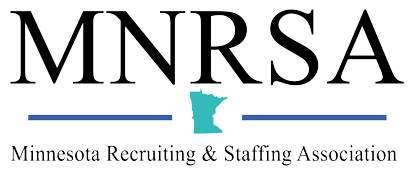Solving the Gen Z Conundrum to Close the Talent Gap
Solving the Gen Z Conundrum to Close the Talent Gap
Manufacturing performance seems to be exceeding expectations in recent years, but the looming talent gap remains a primary concern, and could weigh heavily on growth prospects in the mid to long term. Investment continues to flow in domestically and abroad, but an aging workforce and a lack of eligible candidates to fill those positions, it will be more difficult to capitalize on those opportunities.
Manufacturing is becoming a more technological industry and one that lends itself to highly skilled and tech-savvy professionals, creating the shortage of qualified workers to succeed the aging workforce. The evolution of manufacturing has fostered an environment ideal for a population of potential candidates that has more recently entered the workforce, Gen Z. The workers of Gen Z have been heavily immersed in technology since they opened their eyes, and a large population of them have signaled that they are more open to working in manufacturing, yet the industry has had trouble attracting and retaining Gen Z workers.
The characteristics and work environments that motivate and cater to this new population of workers is different from their predecessor generations and manufacturers need to be creative and open-minded to leverage a generation that would seem to be a perfect fit to fill critical vacancies.
Motivating factors for Gen Z
Understanding how to attract and engage workers from Gen Z is a crucial first step in recruiting more of them to manufacturing. Unlike older generations of workers, they are less motivated by compensation and more driven by flexibility and being involved in meaningful work. Their motivations for taking, staying in and leaving the job differ significantly from previous generations.
- Money DOES matter, but much less: For boomers, compensation was the primary factor for considering a position. For Gen Z, compensation is one of the lowest priorities for taking a job and is still not top reason for leaving a job. Prior to Gen Z, compensation was a major influence on taking or leaving a job.
- Physical, psychological security and understanding are more important than money: Gen Z wants to know that they can make mistakes without harming their prospects for long term development and growth. They also need reassurance that they will be physically safe, and their mental health will be considered and respected.
- Making a difference and meaningful work: More than any other generation, Gen Z longs to make a difference and be involved in meaningful work and consider it a top priority in the job search.
In the past, manufacturers have fought the shortage by increasing compensation to attract and retain employees, but even employers that can afford substantial wage increases (over 20 percent) have not seen a return on that investment and have been unable to keep Gen Z in manufacturing roles.
A common complaint regarding this generation of workers is that they lack rudimentary people or technical skills but what that argument doesn’t account for is that they have additional skills that are not properly leveraged. To be successful in utilizing this unique workforce, manufacturers will need to combine digital capabilities with manual to equip these workers for success in these roles and start to fill vacancies.
The typical on the job training and certifications that are used to respond to low performance and capability shortfalls are not effective with the Gen Z cohort, and manufacturers will need to rethink how they address those issues. Dedicated roles for continuous trouble shooting and “in-the-moment” equipment performance intervention are both great fits for addressing these capability deficits and creating a role for the technologically inclined Gen Z worker that gets bogged down with delays and inconveniences.
Customary practices that may have worked well in the past for other generations will not be effective for Gen Z. Manufacturers will have to reimagine roles, restructure certain departments, and listen more to understand this population of workers to successfully leverage them to assist in the talent crisis.
Best practices to engage and retain Gen Z workers
Ideological and industry norm shifts may take a bit longer, but there are some fundamental strategies that manufacturers can keep in mind as they address this population of workers.
- First impressions and the first 90-days of employment are critical: More Gen Z workers leave in the first 90 days than any other generation. Make sure that these workers have a thorough understanding of their role, job requirements and how their efforts tie into the bigger picture.
- Empower younger employees: Advancement and progression are key for Gen Z. If they are not given feedback or feel they are moving too slowly they will lose interest. Finding mentors for these younger employees and empowering them to find solutions will ensure they are invested and satisfied.
- Connect their work to broader outcomes: Meaning matters with Gen Z. Evaluate your corporate purpose, mission statement and even desired outcomes for specific roles to tie it to larger environmental/societal outcomes to keep Gen Z’s attention and retain them.
- Job flexibility: The typical 10–12-hour shifts on the line are not ideal for Gen Z. Addressing basic questions like when and where the job must be performed may reveal opportunities to make these positions more enticing to a more progressive generation of workers.
- Provide opportunities for career development: Dedicated resources for learning and professional development will help younger employees learn critical problem-solving skills to feel more independent in their roles. These programs will help their confidence and their productivity.
-
Bryan Besco Director of Business Development
- October 01, 2024
- 734 882 4608
- Send Email

.jpg)
